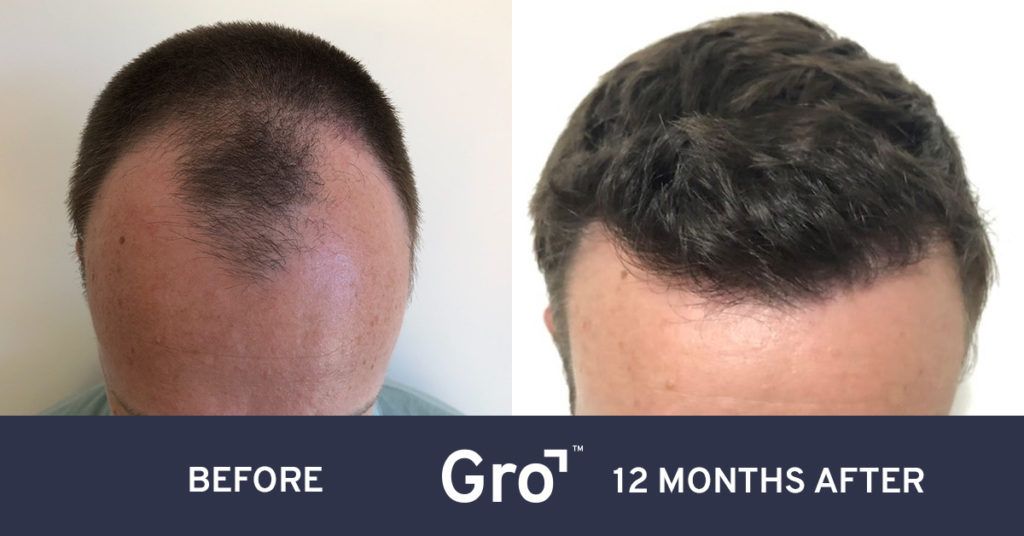You could call forehead reduction the dark horse of cosmetic procedures. It’s popularity has increased exponentially in the last few years as more and more people become aware of the possibilities it offers.
We often get inquiries from people who are interested in the procedure but who understandably also have concerns about it. What is forehead reduction procedure? Who can have it? What can be achieved? How much does it cost? These are the types of questions many men and women have when considering correcting their hairline or reducing their forehead size.
In this article we’ll answer all the most common questions regarding this procedure.
Is forehead reduction a thing?
Yes, it most certainly is! Forehead reduction procedure has been around for a while and is becoming increasingly popular as cosmetic procedure becomes more common and technology evolves.
A forehead reduction or hairline lowering procedure can be used to bring down the hairline or to make it more symmetric. There are many reasons people look into hairline lowering – some are born with an uneven or high hairline, others want to bring it back down after hair loss. The most common desire is just to create more balanced facial proportions.
Importantly, there are a couple of different procedures that can be used to shorten the forehead. Now, we’ll go over the traditional hairline lowering procedure method and the hair transplant alternative.
The traditional foreheadplasty technology
A traditional foreheadplasty involves cutting along the skin of the forehead and pulling the scalp forward to lower the hairline. For this method to work, the person’s scalp needs to have enough flexibility.
Tiny, dissolvable implants are then placed underneath the scalp to hold the skin in place while it heals. A section of the forehead skin is removed and the incision is closed with dissolvable stitches.
At Gro, we don’t do these procedures, but use a non-invasive hair transplant procedure method instead. The two methods offer completely different ways of reducing the size of the forehead, so let’s look into how the second one works.
Forehead reduction with hair transplantation
A reGro® hair transplant offers a non-invasive alternative to traditional forehead reduction procedure. With our transplant technology, it’s possible to fix very specific areas of the scalp, including the hairline, with no cutting or stitches involved.
Our PFP hair transplant method uses gentle, specifically developed extraction and implantation tools to transplant individual hairs. The hair follicles are taken from the back and sides of the head and transplanted to the hairline to lower or correct it. This method involves no cutting and no scarring, which makes it a less scary prospect for many patients.
Our doctors specialise in hair transplants and are trained to create a hairline that looks natural. The doctor has control over the depth, direction and angle of the transplanted hair to blend it flawlessly with the rest of your hair.
So, these are the two alternatives you have when it comes to hairline lowering procedure. Now, let’s move onto some of the most common questions we get about FUE forehead reduction.

Forehead reduction/hairline lowering FAQs
What can a forehead reduction procedure achieve?
A reGro® hairline correction or forehead reduction procedure redesigns and lowers the hairline to create a younger, more balanced appearance with a smaller forehead. It can also be used to correct an uneven hairline or to bring back a receding hairline.
As we transplant individuals hairs, it’s possible to completely fine-tune the results to your wants and needs.
Our doctors are trained to create a 100% natural-looking result, meaning age-appropriate and realistic hairlines. How far the hairline can be brought down will depend on your facial features and other individual factors.
Who can have a forehead reduction procedure?
The same standards that are needed to qualify for a regular hair transplant apply to forehead reduction procedure. Typically, a person who wants to go ahead with a forehead reduction is at a point where their hairline causes them distress and affects their life significantly. You must be willing to follow pre-and post-procedure instructions and be of good general health.
Most people who decide to get a forehead reduction procedure have one of the following:
- A genetically high hairline that they wish to lower
- A large forehead they wish to shorten
- A noticeably uneven hairline
- A hairline that has started receding beyond normal maturing
- A thinning hairline due to male pattern baldness
- Low or heavy eyebrows and a desire to balance the proportions of the face
- A previous brow lift procedure and a desire to bring the hairline forward
The best way to find out if you’re a good candidate for hairline lowering is to book an obligation-free consultation with one of our hair restoration experts. A consultation will give you a clear idea of what can be achieved and how much it would cost, with no obligation to follow through.
How much does a forehead reduction/hairline lowering procedure cost?
As with any cosmetic procedure, the cost will vary depending on many factors. With forehead reduction procedure, the most important variable is the number of hairs to be transplanted, which is different for each person as everyone’s hairline is unique.
At Gro, you’ll get an individualised quote when you come in for your consultation. After the consultation, it’s up to you whether you want to go ahead with the procedure or not, and you can take as long as you like to make the decision. You can book your personalised consultation to take place in-clinic or online via video.
Does forehead reduction hurt?
No, you won’t feel any pain. Most people are surprised by how little discomfort they feel. The only thing you’ll feel is the initial injection of the local anaesthetic and potentially some swelling afterwards. Have a look at some of our patient videos to see what to expect on the day and during the recovery process.
Is forehead reduction safe?
Every procedure carries risks such as infections or complications. As far as procedures go, a hair transplant micro-transplant is very low-risk. All our procedures are performed by trained and registered doctors at our clinics across Australia. The recovery time is not very long and involves follow-up appointments with a nurse so we can make sure everything is tracking well.
How long does the procedure take?
The procedure can take anywhere from a couple of hours to a full day – depending on the number of hairs to be transplanted. You’ll find out what to expect during your first consultation. Our team is highly experienced and efficient, but giving our patients the best possible results is our priority, so we never rush our work.
How long does forehead reduction take to heal?
Gro micro-transplant has a shorter recovery time compared to older hair transplant methods. For example, the traditional foreheadplasty method has a much higher risk for complications, including scarring, uneven skin and unnatural results.
The tools used with a reGro® hair transplant are so fine that nobody will be able to tell you’ve had a procedure done. No scalpels, no stitches, no scarring. Patients may return to work as soon as a few days to a week following their procedure. Most of our patients like to take a week off work for their own comfort.
Is forehead reduction permanent?
Yes, the best part about a reGro® hair transplant procedure is that the results are permanent, so you can enjoy your new hairline for life. The hairs are transplanted from the back and sides of the head, areas that are typically resistant to balding.
However, if you’re genetically prone to male pattern baldness, you may lose more hair in other areas, such as the crown of the head. This can be delayed and prevented with prescription medication.
Is forehead reduction worth it?
It all comes down to how important it is to you to lower your hairline. While forehead reduction procedure comes at a cost, the boost in self-confidence is invaluable to some people. If your hairline is affecting your social life, relationships and mental health, it may be worth considering.
If you need help deciding, book a consultation with us to get an expert opinion. Our consultants will give you an idea of what can be achieved and a specific quote of what it would cost. We never recommend going ahead with the procedure if we don’t think it’s the right choice for you.
Where can I get a forehead reduction?
This will depend on what type of procedure you decide to go ahead with, as well as other preferences. It’s worth it to spend some time researching your options and getting a feel for the procedure provider.
As with any cosmetic procedure, you want to feel well looked after and confident in getting the results you want. Different providers may differ in price, but also quality, results, patient experience and post-procedure support.
At Gro, we offer forehead reduction procedures at our clinics in Brisbane, Sydney, Melbourne and the Gold Coast. Check out some of our reviews to see what others had to say.

Benefits of Gro Micro-transplant
- Fast recovery, less time off work
- Minimal discomfort
- No scalpels, no stitches and no detectable scarring
- 100% your own hair, not synthetic implants
- Consistent follicle survival rates of over 95%
- Permanent results – the hair will continue to grow for life
- Natural-looking results to suit your features
Book your consultation
For personalised information about forehead reduction procedure, book an online or in-clinic consultation with one of our Hair Growth Specialists. If you have any questions, you can call us on 1300 787 563.









